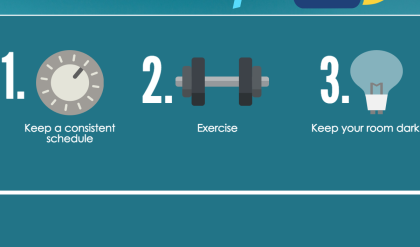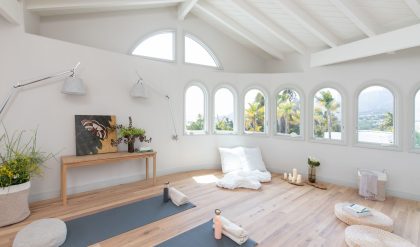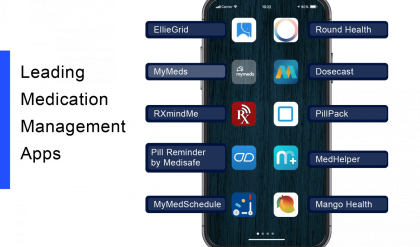
7 Ways to Find the Perfect Senior Care Facility: A Treasure Hunt for Peace of Mind
Finding the right senior care facility isn’t just about ticking boxes on a checklist; it’s about finding a home where your loved one can thrive. It’s a treasure hunt, and this guide provides your map. Forget the sterile, clinical approach; let’s embark on a journey to discover the perfect fit.
1. Beyond the Brochure: Uncover the Unscripted Story
Forget glossy brochures promising paradise. Real insight comes from unscripted interactions. Schedule unannounced visits, observing the atmosphere firsthand. Is the staff genuinely engaged with residents? Does laughter echo in the hallways? Listen carefully; the environment whispers its own story. Look for genuine connection, not staged perfection.
2. The Staff: The Heartbeat of the Home
The staff isn’t just a workforce; they’re the heart of the facility. Interview multiple staff members, not just administrators. Ask about their training, their experience, and their approach to resident care. A warm, compassionate demeanor speaks volumes. Observe their interactions with residents – are they patient, respectful, and truly engaged?
3. Resident Testimonials: Voices from the Inside
Don’t underestimate the power of resident testimonials. Speak with current residents (if possible) and their families. Ask about their experiences—both the good and the challenging. Their honest feedback provides an invaluable perspective, often revealing details that brochures miss.
4. Scrutinize the Details: Beyond the Big Picture
While the overall atmosphere is crucial, don’t neglect the details. Investigate the facility’s safety measures, emergency protocols, and nutrition plans. Inquire about activities and programs offered, ensuring they align with your loved one’s interests and abilities.
5. Location, Location, Location: More Than Just Proximity
Proximity to family is important, but consider other location factors. Is the facility easily accessible by public transportation? Are there nearby amenities like parks or community centers? A supportive community can significantly enhance your loved one’s quality of life.
6. Financial Transparency: A Clear Picture of Costs
Discuss the financial aspects openly and honestly. Obtain a detailed breakdown of costs, including hidden fees. Clarify payment options and insurance coverage. Transparency regarding finances ensures you avoid unpleasant surprises down the road.
7. Trust Your Intuition: The Gut Feeling
After careful consideration, trust your gut. If a facility feels right, it likely is. Your intuition plays a crucial role in this decision. Don’t hesitate to revisit a facility or explore additional options if you remain unsure.
| Feature | Ideal Scenario | Concerning Sign |
|---|---|---|
| Staff Interaction | Warm, engaged, attentive | Distant, rushed, dismissive |
| Resident Engagement | Active, happy, social | Withdrawn, unengaged, unhappy |
| Facility Cleanliness | Spotless, well-maintained | Dirty, neglected, unpleasant odor |
| Activities Offered | Varied, engaging, appropriate for residents | Limited, monotonous, unsuitable for residents |
| Communication | Open, transparent, responsive | Unresponsive, unclear, secretive |
Finding the perfect senior care facility is a journey, not a race. Take your time, ask questions, and trust your instincts. The reward? Peace of mind knowing your loved one is in a place where they can truly thrive.

Additional Information
Deep Dive: 7 Ways to Find the Perfect Senior Care Facility – An Analytical Approach
Finding the right senior care facility is a complex process fraught with emotional and logistical challenges. While a simple list of “7 Ways” provides a starting point, a deeper analytical understanding is crucial for informed decision-making. This analysis delves into each of those seven ways, providing additional insights and considerations to empower families in their search.
1. Assess Needs and Priorities: Beyond the Checklist
Simply identifying “memory care” or “assisted living” isn’t sufficient. A comprehensive needs assessment should encompass:
-
Cognitive abilities: Beyond a diagnosis, consider the specifics. Does the senior experience sundowning? Are they prone to wandering? Specific cognitive challenges dictate the level of care needed. For instance, a facility specializing in dementia care with a specialized therapeutic environment (e.g., secured outdoor spaces, sensory rooms) may be far superior to a general assisted living facility for a person with advanced Alzheimer’s.
-
Physical capabilities: Assess mobility, continence, and the need for assistance with ADLs (Activities of Daily Living) like bathing, dressing, and eating. This dictates the level of personal care assistance required. Look for facilities with staff-to-resident ratios aligned with these needs. A higher ratio often correlates with better care, although this should be considered alongside other factors.
-
Social and emotional needs: Consider the senior’s personality, social preferences, and potential for isolation. Does the senior thrive in a lively environment or prefer a quieter setting? Some facilities specialize in specific social activities or have strong community engagement programs.
-
Financial resources: The cost of senior care varies dramatically based on location, services offered, and facility type. Research average costs in your area and explore long-term care insurance or other financial planning strategies before you start your search. The National Center for Health Statistics provides data on average nursing home and assisted living costs which can be used as a baseline.
2. Utilize Online Resources: Beyond Search Engines
While online searches are a starting point, leverage specialized resources such as:
-
State licensing agencies: Check state websites for facility licenses, inspection reports, and complaints filed against facilities. These reports often reveal crucial details not found on marketing materials. For example, deficiencies in medication management or staffing shortages can be identified here.
-
Medicare.gov Nursing Home Compare: This website provides valuable data on nursing homes’ quality ratings, staffing levels, and infection rates. While it doesn’t cover assisted living facilities, it’s an essential tool for selecting nursing homes.
-
AARP and Eldercare Locator: These organizations offer resources for finding facilities, accessing financial assistance programs, and connecting with elder care experts.
3. Visit Multiple Facilities: A Structured Approach
Visiting facilities requires a structured approach. Prepare a list of specific questions focusing on:
-
Staff training and qualifications: Ask about staff turnover rates, continuing education opportunities for staff, and the facility’s approach to employee retention. High staff turnover can negatively impact continuity of care.
-
Safety and security measures: Inquire about security protocols, emergency response plans, and measures to prevent falls and other accidents.
-
Meal planning and nutrition: Observe the dining area and inquire about dietary accommodations and the menu’s variety.
-
Activities and programming: Assess the quality and variety of activities offered, ensuring they align with the senior’s interests and abilities.
4. Talk to Residents and Families: Beyond Marketing Gloss
Engage with current residents and their families. Their firsthand accounts can provide invaluable insights into:
-
Quality of care: Inquire about staff responsiveness, cleanliness, and the overall atmosphere. Observe interactions between staff and residents.
-
Social environment: Understand the social dynamics within the facility. Do residents seem engaged and happy? Are there opportunities for socialization and community building?
-
Hidden costs: Residents and families may reveal unforeseen expenses beyond the advertised cost, such as additional fees for specialized services or personal items.
5. Check Accreditation and Certifications: Understanding Quality Standards
Accreditation signifies that a facility meets specific quality standards. Look for certifications from organizations such as:
-
The Joint Commission: This organization accredits healthcare organizations and provides rigorous standards for quality and safety.
-
CARF (Commission on Accreditation of Rehabilitation Facilities): This organization accredits facilities that provide specialized services for individuals with disabilities.
6. Consider Location and Accessibility: The Practicalities
Location influences factors beyond proximity. Consider:
-
Transportation access: Is public transportation readily available? Is the facility accessible to family members who may need to visit frequently?
-
Proximity to healthcare services: Is the facility close to hospitals and other healthcare providers for emergencies or routine medical appointments?
7. Trust Your Gut Feeling: The Unspoken Factor
While all the previous steps are crucial for making an informed decision, don’t underestimate the importance of your intuition. If a facility feels uncomfortable or doesn’t align with your values, continue your search. A good fit involves a harmonious blend of objective assessments and subjective feelings.
Conclusion:
Finding the perfect senior care facility is a journey requiring thorough research, careful evaluation, and an understanding of the individual’s specific needs. By employing a detailed analytical approach, going beyond surface-level assessments, and leveraging available resources, families can greatly improve their chances of securing high-quality care for their loved ones. Remember that continuous monitoring and open communication with the facility are essential to ensuring optimal care throughout the senior’s stay.






